aNewDomain.net — With the Microsoft $7.2B purchase of Nokia on everyone’s mind, there is a lot of focus on Windows Phone 8, Microsoft’s mobile OS. While everyone’s pondering the ramifications of it all, I’ve been collecting Windows Phone 8 tips to get you rolling on that. Here’s how to use Windows Phone 8 — the prequel.
First off, remove the useless apps. And there are a ton of them.
It’s annoying when you get a new Windows computer at a cheap price and find the caveat – tons of crapware loaded up on the system. Unfortunately, that’s the case with Microsoft’s Windows Phone 8 smartphones and tablets. For instance, if you want a pure Android experience without extra junk, your best bet is to get the Nexus line from Google – not a Samsung device which is notorious for its own proprietary apps.
For PCs, Microsoft has its Signature line of computers. Not a lot of people know about this program, but you can buy them at a Windows Store or online. Basically the company takes its OEM partner’s laptops, and does a clean install of the Windows operating system, removes the recovery partition and the extra junk.
But I digress. Getting rid of extra apps from a Windows Phone 8 is easy – much easier than it is on a Windows 8-based PC. Here’s how to remove the extra apps.
From the list of installed apps, press and hold the one you want to get rid of.
When the system pops up a menu, tap Uninstall. Verify you want to get rid of them.

Next, here’s how to secure your Windows Phone 8 device — lock it down.
Security is key on your mobile devices. As a first line of defense, lock down and secure your Windows Phone 8 smartphone or tablet by creating a password to unlock it.
To create a Windows Phone 8 password, go to Settings > System > Lock Screen.
Then type in a numeric password twice.
Also, in Lock Screen Settings, select how long you want it to be until the screen times out — and how long after the timeout you’ll need to type in a password.
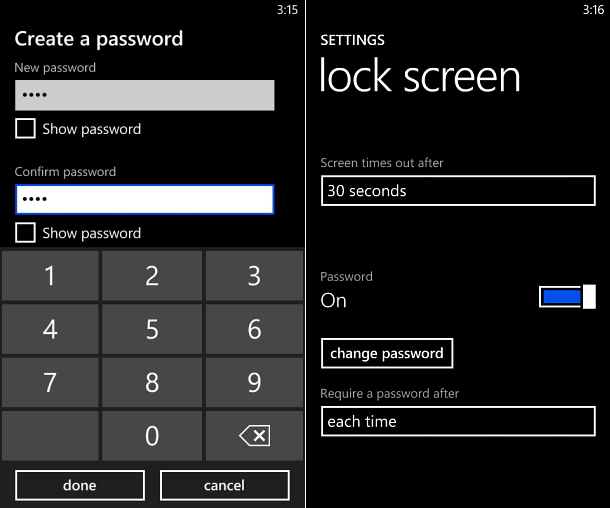
And here’s how to lock down Windows Phone store purchases …
You also have to make sure your phone is locked down. Set a password on Windows Phone Store purchases. Your credit card is tied to purchases you make from the store, so make sure no one grabs your phone and goes nuts spending your money.
To lock down store purchases, launch the store and tap Options > Settings.
Then type in a four digit PIN for your Windows Phone 8 Wallet. The system will require every PIN for anything you buy from the store –including apps, music and games.
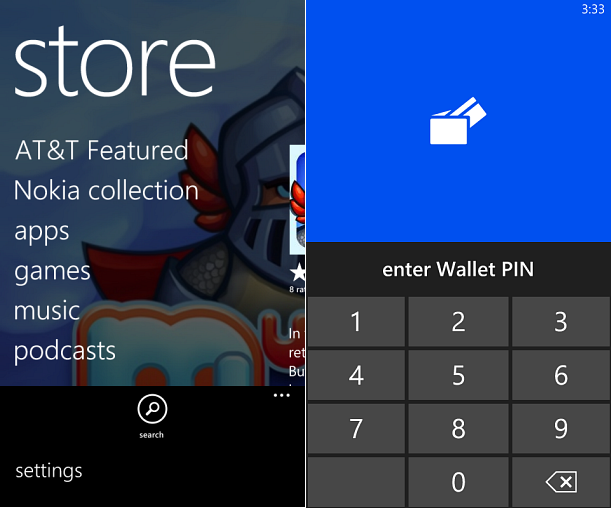
Got offspring? Here’s how to use Kid’s Corner
If you’re a parent whose child can’t keep their hands off your phone — and none of them can –there’s a new feature in Windows Phone 8 called Kid’s Corner well worth exploring. Kid’s Corner lets you create a profile specifically for your kids. They get their own Start screens but they’re only able to access the items you make visible to them.
That way your data, settings and contacts are completely safe.
Go to Settings > System > Kid’s Corner to turn it on and set it up. Select just the games, videos, music and apps that you want your kids to be able to access. Think of it as a limited settings-proof “sandbox” profile for just the kids.
When the kid finally surrenders your smartphone, all you have to do is press the power button to resume your adult life.
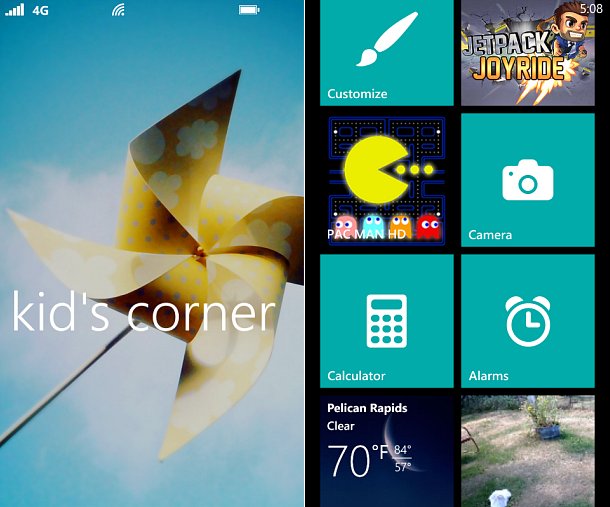
Here’s how to customize Live Tiles and Lock Screen in Windows Phone 8 …
Customization is everything. Windows Phone 8 lets you customize its Live Tiles and the Lock Screen. Customizing the Live Tiles is a lot like customizing them in Windows 8.1.
Just tap and hold a tile until you see icons for pinning them or changing their size. Then you’re able to move the tiles around on your phone, too. I suggest moving the apps you use most frequently right to the top. That way, you see the data you need most with just a glance.
Some of the tiles let you select three sizes – small, medium and wide– just by tapping the arrow icon. Most other systems just limit you to small and medium, so that’s a plus.
To pin or unpin a tile, tap the tack icon on its upper right corner.
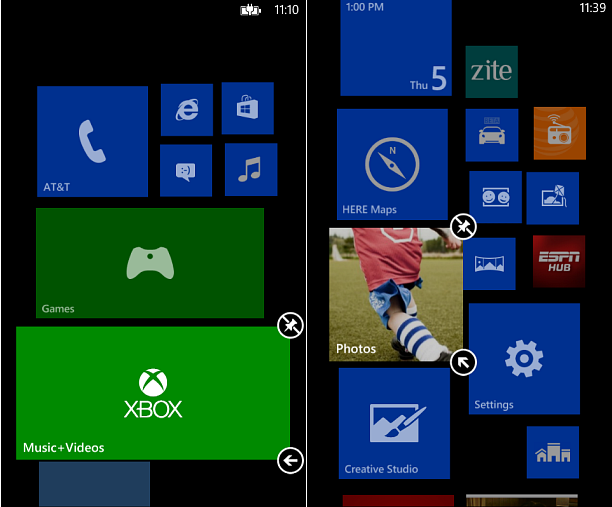
Customizing the lock screen on Windows Phone 8 is easy, too.
Launch Settings.
Under System, tap Lock Screen. The next screen will give you several different options you can combine to make a truly unique lock screen. You can set the background as a static photo, the Bing image of the day or set it to show the band or artist when music is playing.
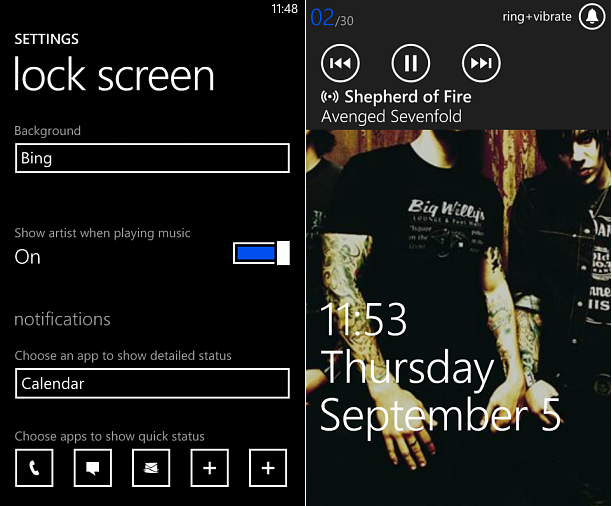
This is also where you can pick different apps that will show you quick status like the calendar, email, and others.
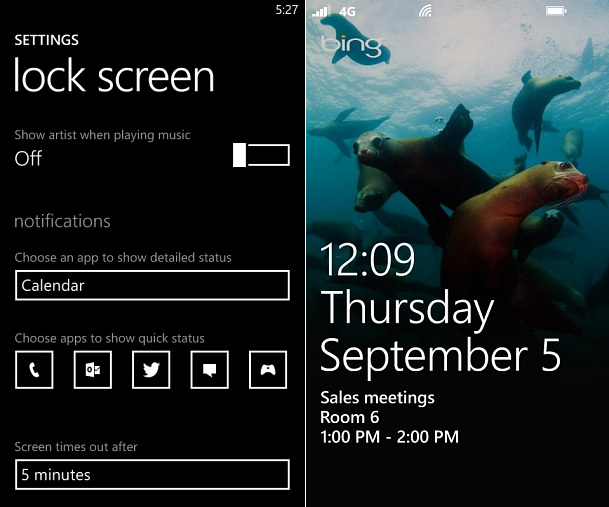
How to transfer files from Windows Phone 8 mobile to a PC …
You’re able to store most of your data in the cloud via SkyDrive, Dropbox, and other services, but there will be times when you need to connect your phone to your PC to transfer files between the two. One way to do this is via the Windows Phone desktop app. Or use the new Windows 8 app that is compatible with Windows RT. The latter is way more streamlined.

You transfer files by browsing the phone’s file structure. This feature is new to Windows Phone 8. It shows you the internal memory file structure as well as the micro SD card system — if you have one installed.

Similar to the functionality you’ll find in Android, this feature lets you drag and drop files from your phone to PC and vice versa. It works like you’d expect File Explorer to work, giving you the ability to just drag files from your smartphone’s internal storage to the micro SD.
This makes deep management of the files on your phone easy.
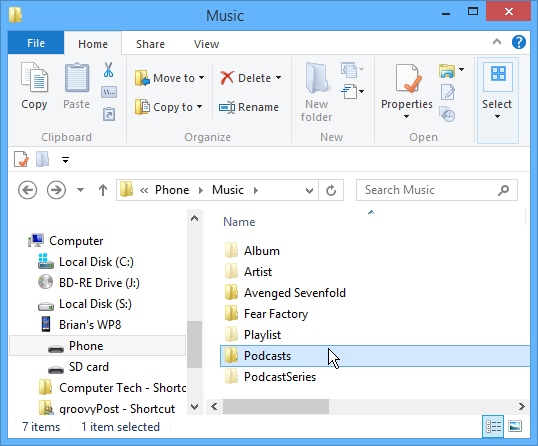
Overall there are a lot of new features in Windows Phone 8 that greatly enhance the mobile experience in Microsoft’s mobile OS. I’ll be bringing more tips on how to use Windows Phone 8 in coming days and months.
Got a specific question? Shoot me an email at Brian@aNewDomain.net.
For aNewDomain.net, I’m the How To gallery senior editor Brian Burgess.
NOTE: In case you missed news on the Microsoft-Nokia buy, here’s the official press release from Microsoft. You can also check out a copy of the email Steve Ballmer sent out to all Microsoft employees. For an interesting view on whether this deal will go through, check out Gina Smith’s piece: Microsoft Nokia Buy? Hell, No, Finns and DOJ Won’t Go.
Based in Pelican Rapids, MN, Brian Burgess led the relaunch of BYTE with Gina Smith, co-founded aNewDomain.net with Gina, John C. Dvorak and Jerry Pournelle in 2011, and serves as the editor-in-chief of GroovyPost.com. He is the How To gallery captain here at aNewDomain.net. Email him at Brian@aNewDomain.net or Brian@Groovypost.com and find him on Google + and on Twitter as @mysticgeek.












